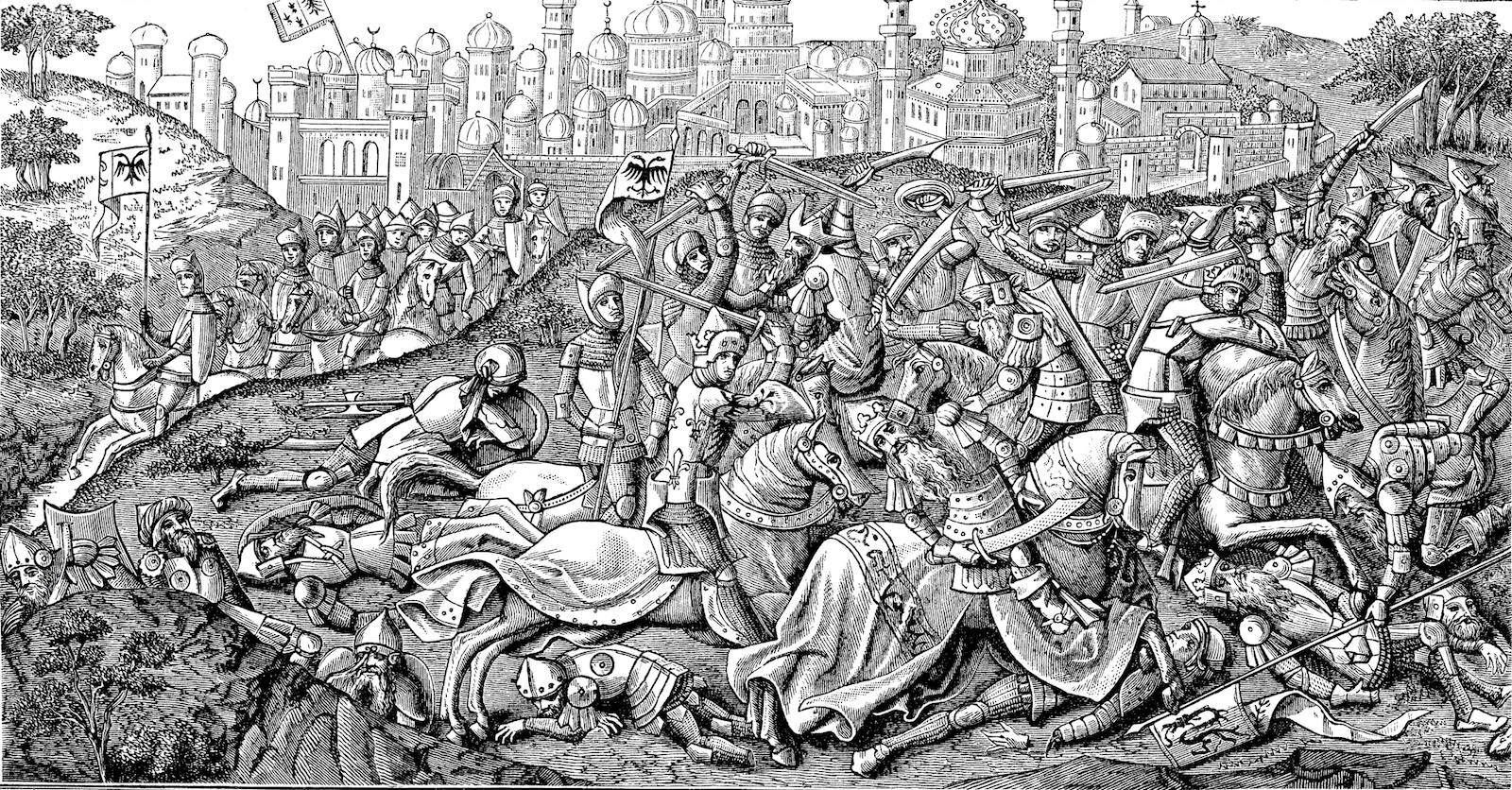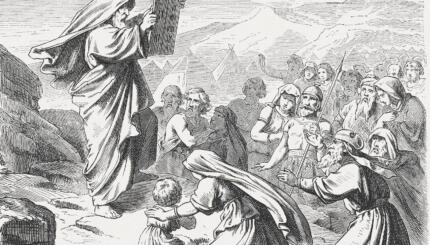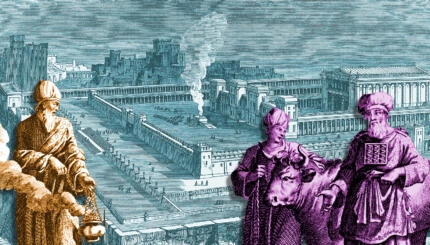Jewish historians define the medieval period (or the Middle Ages) between the Muslim-Arab conquests in the early seventh century and the appearance of modern ideas regarding the economy, religious identity and social interaction, sometime around the mid-17th century. This period is characterized by the geographic dispersion of the Jews, who lived under the rule of the two other monotheistic faiths, Christianity and Islam.
Under Two Empires: Muslim and Christian
Under Islam, the laws governing Jewish life were set forth in the Pact of Omar. This contract, established in the seventh century, required non-Muslims to abide by a host of discriminatory regulations, such as rising in the presence of Muslims and dressing in distinctive garb. The medieval Islamic empire included, at various points, significant Jewish communities like Toledo, Constantinople, Salonika and Jerusalem.
Jews living in Christendom — in places like Rome, Worms, Cracow, or, after, 1248, Spain — were subject to the laws of both church and state. Under Islam, there was no separation between church and state, so Jews expected uniformity from Muslim leaders. Under Christianity, the separation of church and state, coupled with the absence of unified religious law regarding Jews, led to arbitrary application of policy and punishment.
Early medieval Judaism was guided by the heads of the rabbinical academies (yeshivot), known as geonim. Decentralization of rabbinic Judaism paralleled the breakup of political unity in the Islamic empire in the eighth and ninth centuries. Thereafter, local academies and rabbis gained prominence.
With your help, My Jewish Learning can provide endless opportunities for learning, connection and discovery.
Under Christianity, Jews were organized as independent self-governing units known as kehillot (communities). Each kehillah was geographically based and supported its own synagogue, courts, and educational system.
Two great cultural sub-communities of Jews developed. Ashkenazim trace their family roots to the German lands. Sephardim trace their ancestry to the Iberian peninsula (Spain and Portugal). Culinary and religious customs differed between them, but both groups looked to Jewish law to shape their religious lives.
The Crusades
With the exception of the Golden Age in medieval Spain, when Muslims and Jews cohabitated peacefully and productively, the Middle Ages was a time of tense relations between faiths. The Crusades to “liberate” the Holy Land from Islam, which commenced in 1095 and lasted for three hundred years, saw marauding crusaders devastate Jewish communities in Europe as they made their way to Palestine.
Medieval Jewish Scholarship
Medieval Jewish thought was affected by living as a minority under the rule of other religions. The medieval scholar Joseph Caro authored the Shulchan Aruch, the most definitive and popular compilation of rabbinic law as a means to guide a confused nation in exile regarding the practices of daily religious life. The work of Moses Maimonides, the most eminent Jewish philosopher of the period, also aimed to synthesize religious law and to demonstrate the compatibility between secular and religious learning.
Social History
The medieval Jewish household was urban, literate and consisted of one nuclear family. Under Islam, polygamy was not uncommon among Jewish families. Most medieval Jews were engaged in commerce, as merchants or moneylenders; women were also involved in these trades.



